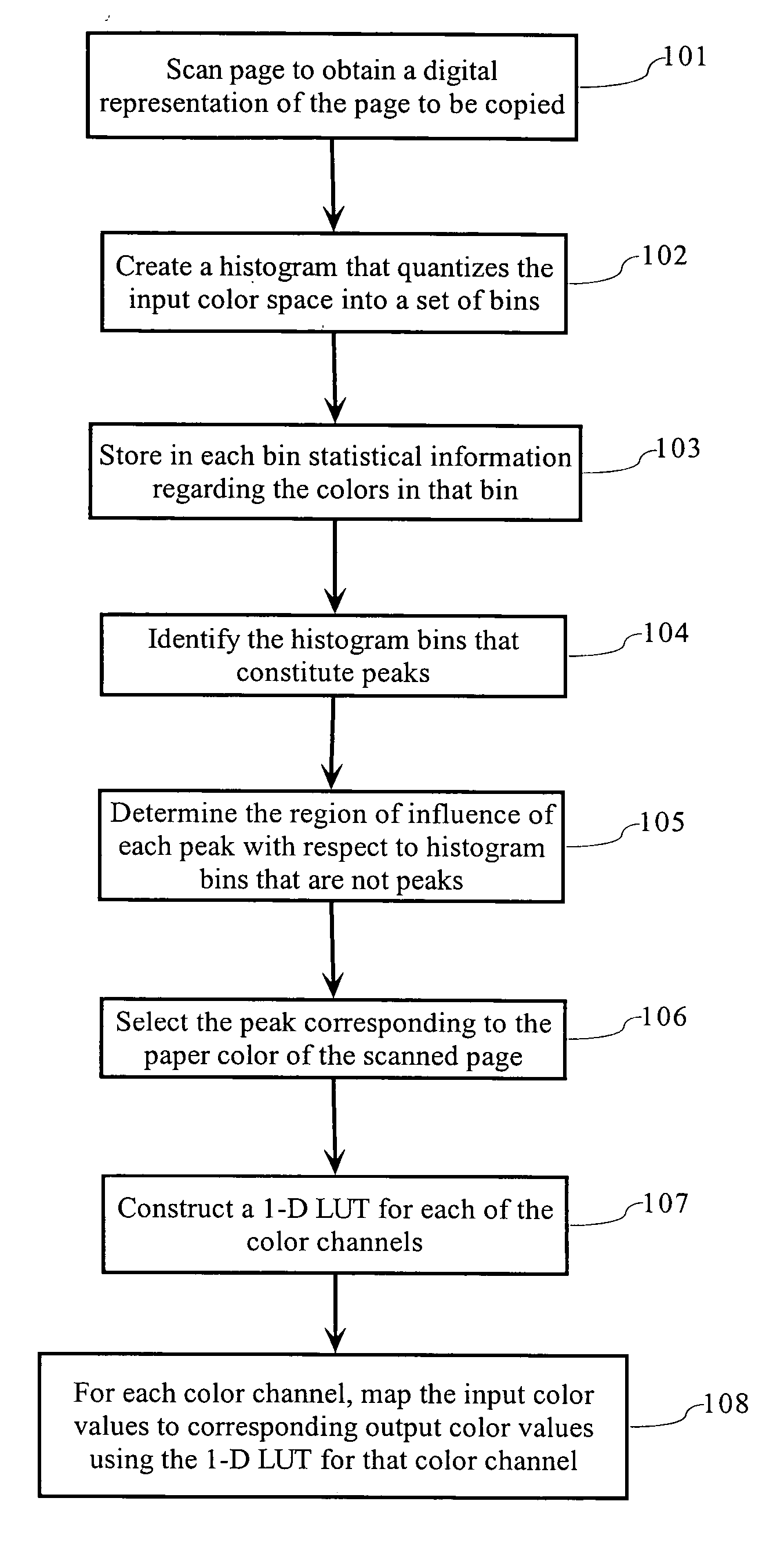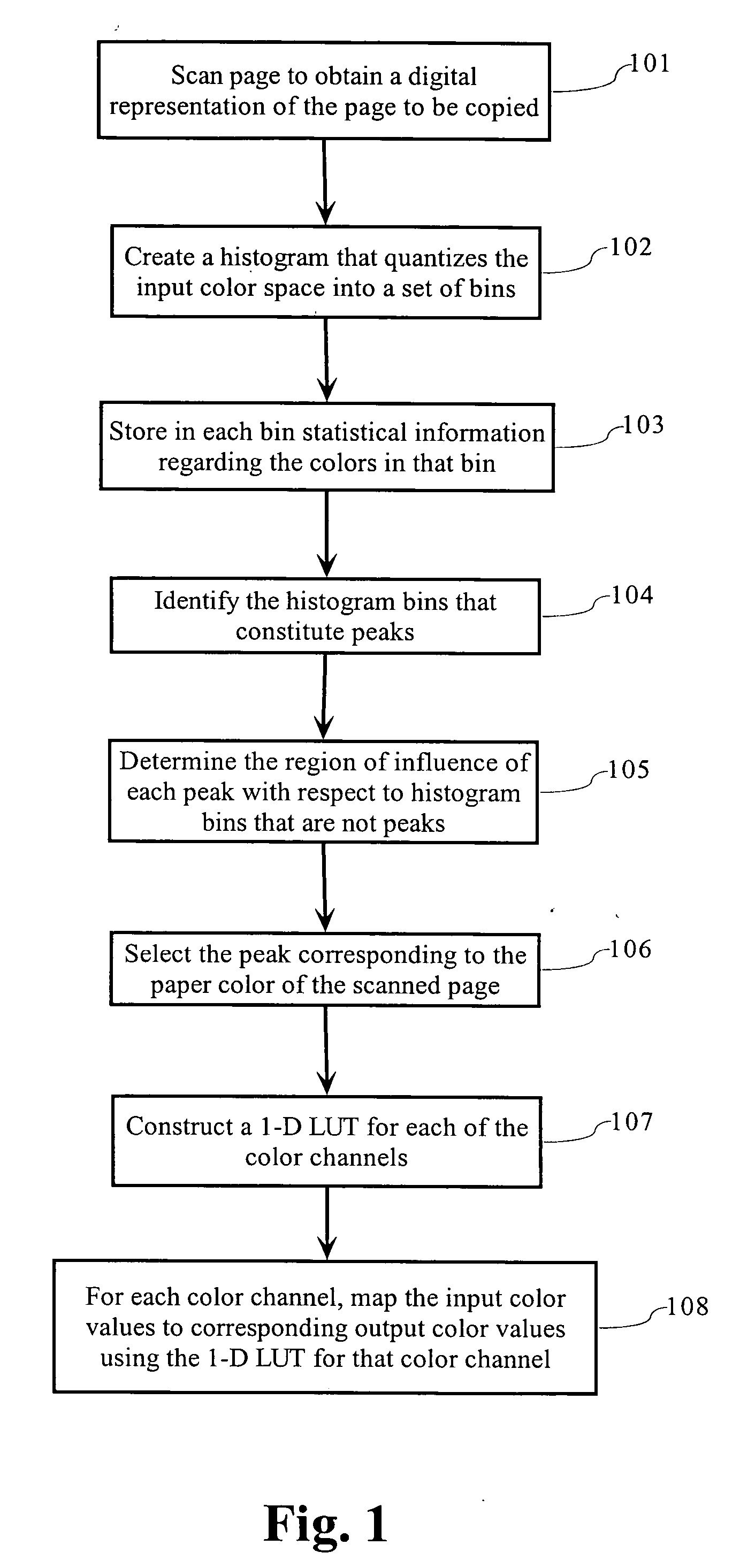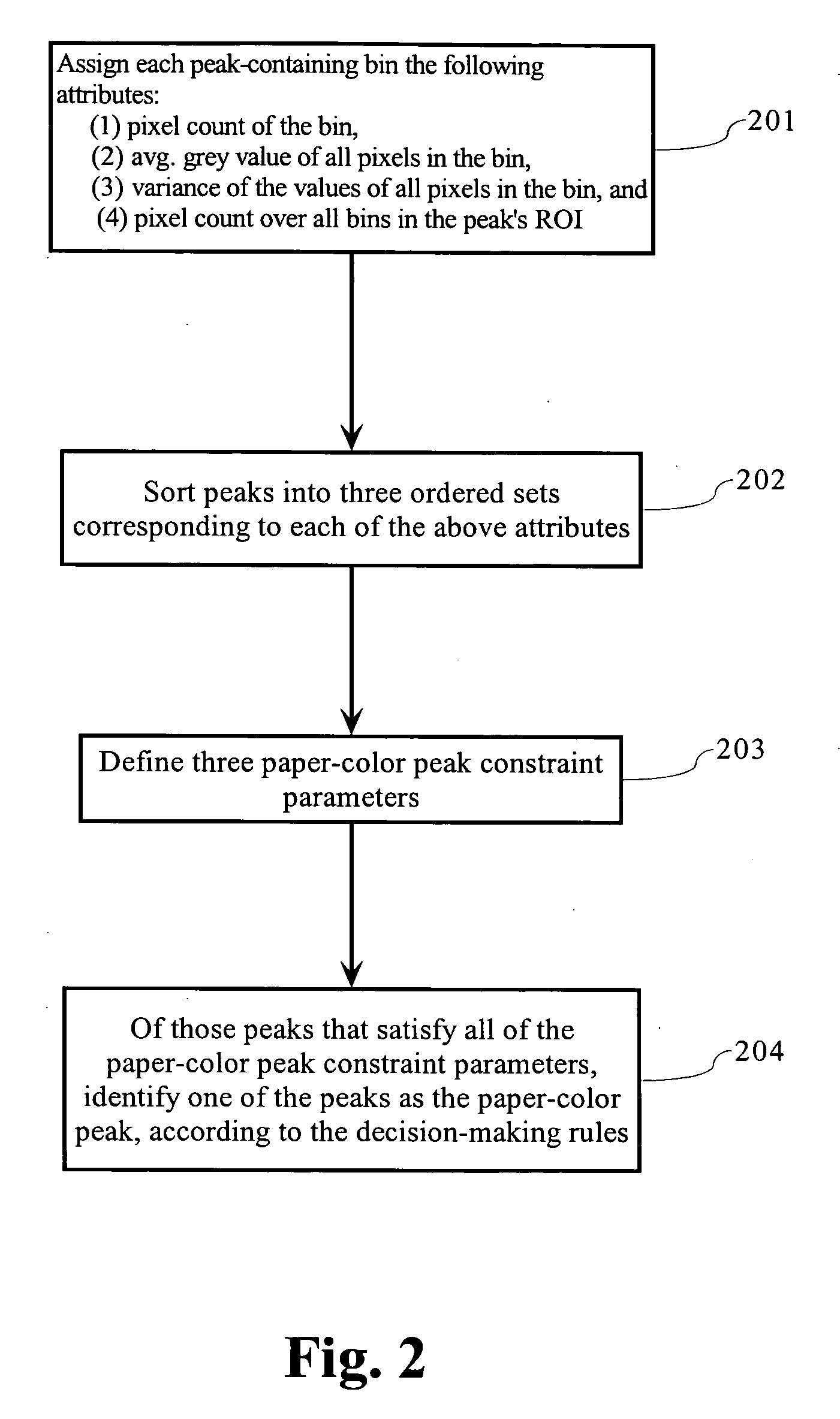Fast low-memory paper color suppression algorithm
a low-memory paper and color suppression technology, applied in the direction of colour separation/tonal correction, digital marking record carriers, instruments, etc., can solve the problem that the high-fidelity copy of such a page that also reproduces the color of the paper is often perceived to be of poor quality, and achieves the effect of minimizing the visibility of bleed-through artifacts
- Summary
- Abstract
- Description
- Claims
- Application Information
AI Technical Summary
Benefits of technology
Problems solved by technology
Method used
Image
Examples
Embodiment Construction
[0022] The algorithm / technique of the present invention, which involves determining and correcting for page background color, has low memory requirements and use three one-dimensional color look-up tables (LUTs) to adjust scanned colors. A significant advantage of this invention is that computationally expensive three-dimensional color matching tables, matching scanner color to printer color coordinates, need not be recomputed for each scanned page.
[0023] The processing involved in determining the color of the paper being copied (i.e., the background color) and estimating one-dimensional RGB color adjustment tables from the scanned page data are illustrated in the flow chart of FIG. 1. Initially, as part of the copy process, each page is digitized to generate a digital representation thereof that is comprised of a two-dimensional array of color elements (e.g., pixels), the color of each of which is specified by the combination of three color component values (step 101). This can be...
PUM
 Login to View More
Login to View More Abstract
Description
Claims
Application Information
 Login to View More
Login to View More - R&D
- Intellectual Property
- Life Sciences
- Materials
- Tech Scout
- Unparalleled Data Quality
- Higher Quality Content
- 60% Fewer Hallucinations
Browse by: Latest US Patents, China's latest patents, Technical Efficacy Thesaurus, Application Domain, Technology Topic, Popular Technical Reports.
© 2025 PatSnap. All rights reserved.Legal|Privacy policy|Modern Slavery Act Transparency Statement|Sitemap|About US| Contact US: help@patsnap.com



